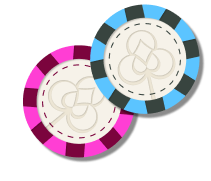Let’s face it. Job interviews are nerve-racking. Mix in changing career fields or joining the workforce straight from college, and you have a whole slew of anxieties brewing right below the surface. More than anything, a job interview is your chance to tell a fantastic story — your story. Knowing how to engage in storytelling during the interview is key.
A person entering the workforce for the first time or re-entering it after a break must be prepared to tell a compelling story in that interview. How she tells the story and what she makes the interviewer believe is the key to helping her progress and land the job.
When we think about crafting our meaningful story, we first need to understand its goal. What is it we’re trying to accomplish? Just like your favorite fable, there’s always a beginning, middle, and an end, and when it comes to storytelling in interviews, you want to make that ending positive, regardless of the outcome.
Just like in poker, you have to gauge your audience or read your opponents, know when to show your cards, or hold off for a bigger, better hand. Master the art of the story so that you can better position yourself at that interviewer’s table.
Sell your story during the interview
Great storytelling is based in truth. To win the interview game, you need to craft a story that will not only capture the interviewer’s attention but make them remember who you are and what you did.
No one should walk into an interview for a job and fabricate everything. You must be honest about who you are, the education and experiences you bring to the table, and why you want the job. Keep in mind there is always room for movement in the details. For example, if the interviewer asks if you’ve ever managed a group of people, think about how your experience in managing a variety of situations can apply.
Perhaps you’ve managed direct reports, or overseen a group of interns, or even directed the work of external partners or vendors. Focus your story on the tough decisions you’ve had to make when it comes to managing processes or projects, in addition to people.
It can be even more challenging managing and inspiring those who don’t report to you directly. These kinds of examples can highlight how your experience is extremely relevant to the potential new position.
Remember the STAR method
The STAR interview technique is a way to respond when prompted with storytelling interview questions. This refers back to other stories and situations from the past.
- S is for situation: Describe the situation from your memory.
- T is for task required: Detail the task required in that situation.
- A is for actions taken: Explain the action(s) you took to achieve a resolution.
- R is for result: Communicate the result as it happened due to your action(s).
Storytelling needs to have a beginning, a middle, and an end. The STAR method is an efficient way to address open-ended interview questions with clear, concise information to help you stand out.
Here’s an example. An interviewer might ask about one of the most difficult decisions you’ve had to make as a manager.
Before answering, think about the events that took place prior to your decision, how those events impacted your decision, and the results. You want to engage your interviewer with a meaningful example punctuated with what you did and what you learned. If the payoff was measurable, be sure to include those stats, or if the result was a new process, explain how that process best served the team.
Prepare your answers before the interview, and ensure your story is complete. Each response should be thoughtful and detailed enough to paint a picture of your experience, the difficulties that arose, and how you overcame them. If you didn’t succeed, what did you learn from that situation?
When you’re recounting that STAR moment, ensure it fits with your overall story. If portraying yourself as a decisive leader, keep the example in line with a time that required decisive action and how you made it happen.
Storytelling with confidence
In poker, a good story often includes a bluff. If a poker player establishes confidence up front, regardless of her hand, she might be able to win it all. By playing her hand as if it’s the best one at the table, she is already setting up a narrative for the other players. By maintaining that image of confidence and making others believe her story, she has a better chance of winning the hand.
A successful bluff requires a solid and believable story. In a job interview, this can be tricky, as parts of your story can be verified as true or false. However, there are ways to convince the interviewer you do hold the winning poker hand, you can handle this job, and you are the best person for the job. A great storyteller understands where to add color, where to highlight, and when to scrap an idea altogether.
When you walk out of that interview, know you told a story based on truth and communicated it with confidence. Even if you don’t win the pot, you’ll know you played the hand as skillfully as possible. Odds are you’ll win the next one. That’s the power of poker.
Ready to rock your next interview? Learn the storytelling secrets you need to succeed and so much more when you sign up for our free online poker classes!










